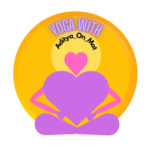
Pranayama- Anulom Vilom: Alternate Nostril Breathing for Wellness

Anulom Vilom, also known as alternate nostril breathing, is a technique practiced in yoga (pranayama) that promotes relaxation and well-being. It involves a rhythmic flow of breath through each nostril, and offers a variety of benefits.
THE PRACTICE
- Find Your Comfort Zone: Sit comfortably, and upright with a straight spine. Common postures include lotus (Padmasana) or easy pose (Sukhasana).
- Hand Positions (Optional): Many use Jnana mudra (thumb and index finger touching) resting on the knee with the other hand. You can alternatively use one hand for nostril control.
- Close and Inhale: Gently close your right nostril with your thumb and inhale slowly and deeply through your left nostril.
- Hold (Optional): Briefly hold your breath (Kumbhaka) at the peak of your inhalation. If you’re new to breath retention, skip this step.
- Switch Sides and Exhale: Close your left nostril with your ring finger, release your thumb, and exhale slowly and completely through your right nostril.
- Inhale and Repeat: Inhale through your right nostril with your left nostril closed. You can hold your breath again briefly if comfortable.
- Exhale and Complete the Cycle: Open your left nostril and exhale completely through it. This is one round. Repeat the process for several minutes, alternating breaths between nostrils.
Benefits:
- Enhanced Breathing: Anulom Vilom may improve lung function and breathing patterns.
- Stress Reduction: The practice can promote relaxation and reduce feelings of anxiety.
- Improved Focus: By calming the mind, Anulom Vilom may enhance concentration.
- Increased Energy: Deeper breaths can lead to better oxygen flow, potentially boosting energy levels.
- Better Sleep: Relaxation techniques like Anulom Vilom may help improve sleep quality.
- Alleviation of Discomfort: Some practice Anulom Vilom to manage headaches and sinus congestion, although more research is needed.
Getting started safely:
- Begin Slowly: Start with short practice sessions (3-5 minutes) and gradually increase the duration as you become comfortable.
- Focus on Breath: Pay attention to slow, deep, and controlled breaths throughout the practice.
- Listen to Your Body: Don’t push yourself, and avoid any discomfort.
- Consult a Professional: If you have any health concerns, consult a doctor before starting Anulom Vilom. Consider seeking guidance from a qualified yoga teacher for personalized instruction.
Remember:
Variations exist in Anulom Vilom practice, particularly regarding breath retention and breath ratio. It’s always best to learn from a qualified instructor to ensure proper technique. Anulom Vilom is generally safe for most people, but consulting a doctor before starting is advisable if you have any underlying health conditions.
To practice and learn more, please ENROLL.





